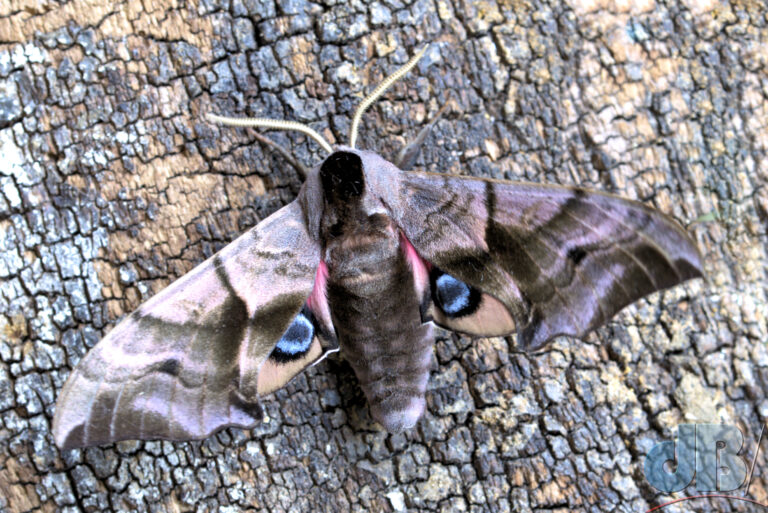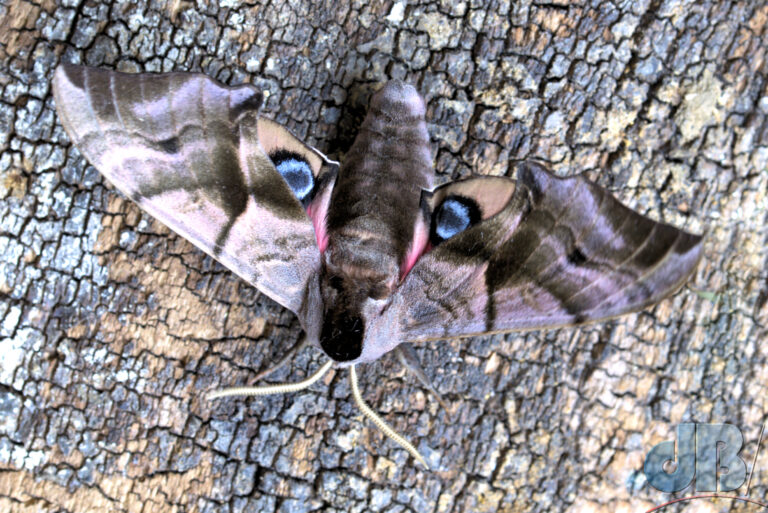Instead of camouflaging themselves to hide from predators, lots of animals exploit a phenomenon known as paraedolia*. Pareidolia is the perception of seeing familiar shapes or patterns, such as faces or objects, in something without or a face or where the pattern or object does not really exist. Humans experience it a lot, it’s why we see animal shapes in the clouds or a gnarly face in the branches and bark of a tree. And why some people think there are Martians, because a mountainous feature on the Red Planet looks like head with eyes staring up at the planet’s rarified atmosphere.

One of the common features of pareidolia in animal defence is to display fake eyes in some way. I’ve mentioned the four false eyes, oculi**, on the wings of the Emperor moth a feature it shares with the European Peacock butterfly. But, other moths keep their eyes hidden from view until they need to make an impression.
The rather obviously named hawk-moth known as the Eyed Hawk-moth, is well camouflaged when it keeps its hindwings covered by its forewings. If startled or pecked at by a bird despite its leafy camouflage, it will flash its hindwings each of which has a rather realistic circular pattern of scales. This, along with the colouration adjacent to the oculi and their sudden display gives the impression of a face looking back at the predator. It’s presumably enough to scare off a hesitant bird.
Intriguingly, the moth puts on a good show of looking like a face staring back from the angle shown in the photo above, but I’ve flipped the shot below and in many ways this gives even more of an impression of an actual animal, I’d say.

There are countless examples of paraedolia in action among the moths and their larvae. Interestingly, this species as with several others, such as the famous Death’s Head Hawk-moth has another feature that uses the effects of paraedolia. While, the wings look like leaves, the back of the moth’s head also has markings that give the impression of a face perhaps belonging to a smaller animal that might nevertheless bite back if a bold bird tries to make a meal of the moth.
Meanwhile, is there such a thing as olfactory pareidolia? The larvae of the Goat Moth have a very strong, unpleasant smell as they exude various volatile compounds – butyric (vomit smell), valeric (pig poo smell), caproic and caprylic acids, the latter two are in male goat urine and smell very unpleasantly caprine. So, these smells presumably are recognised as offensive by predators, which are deterred from eating something so malodorous.
*Paraedolia – from the Greek para meaning alongside, beyond or else irregular, abnormal and the Greek eidolon meaning appearance or reflection.
**Oculus, plural oculi – from the Latin for eye.